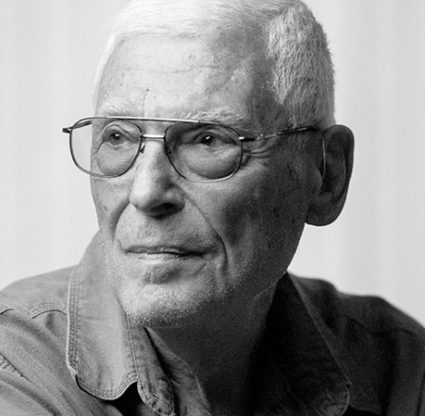She spots them from her perch atop a rumbling swamp buggy. Panther tracks. A recent rain shower had created the perfect muddy medium for perfectly imprinted paws.
Deborah Jansen climbs down from the buggy and squats to examine them more closely. She looks to the woods from where the cat must have emerged, and her eyes fixate on a patch of foliage.
“We can see where the brush has been trampled a little bit,” she says. She crosses the threshold into the forest. A few steps in, she pauses, inhales and peers beyond the brim of her National Park Service hat. “Do you smell that?”
With footsteps as light and as quick as the creatures she tracks, Jansen, the wildlife biologist for Big Cypress National Preserve, makes her way deeper into the woods. A few hundred feet in, we find ourselves at the edge of a watering hole, the remnants of last season’s rains. A few fat bullhead fish chug through the muck amid the scaly carcasses of less-adaptable species. Jansen wonders if the scent that she’d detected is merely rotting fish—or rotting flesh from a panther’s kill. She trudges away from the pool, the odor intensifies, and she hopes for the latter.
“You’re gonna think this was all staged,” she grins, picking her way through the pop ash.
This year, Jansen celebrates her 30th anniversary as Big Cypress’ wildlife biologist and the founder of its panther research project. The story of her career follows that of the big cat’s comeback. Her research—in tandem with that of fellow biologists at other state and federal wildlife agencies—has informed us of virtually everything we know about the Florida panther. Those discoveries are critical for shaping policy, for making land-use decisions and, increasingly, for figuring out how humans and panthers can coexist.
There were no further signs of a panther kill or panther den or anything else panther-related that April afternoon, but the ready visibility of tracks (we’d spotted others elsewhere in the preserve that morning) is remarkable.
Earlier in her tenure, Jansen had teamed up with trapper Rocky McBride to comb Big Cypress looking for evidence of the big cats.
 |
|
Jansen fits a tranquilized Florida panther with a telemetry collar in 2010. |
“(Rocky) and I hunted out here in the preserve—with his dogs—for 30 days straight,” Jansen says. “We didn’t find any panthers. Today, I would say almost any trail that you go on, if you spend a couple of hours in the woods, you’re gonna see where a panther walked the trail.”
The Florida panther, a subspecies of the puma, once roamed throughout the Southeastern United States. Habitat loss, road development and public policy—in the 1800s hunters earned $5 per hide—culled the population to near extinction. In fact, by the 1960s, state wildlife officials could not say for certain whether the Florida panther still existed.
In 1972, the World Wildlife Fund hired the renowned Texas trapper Roy McBride (Rocky’s father) to see if he and his hounds could find traces of them. He did, but their outlook was grim. Less than 20 remained, according to the trapper’s estimates and further research.
If the panther were to persist, it needed some serious protection.
Congress passed the Endangered Species Act in 1973, which gave the cats protected status and would require wildlife experts to craft a recovery plan. A state law in 1978 made killing a Florida panther illegal; in 1982 Florida schoolchildren named the panther the state’s official animal.
And that’s around the time a young biologist had arrived in Florida.
Jansen is a Wisconsin native who retains that north-central, Minnesota-inspired accent. Her friend, Naples portrait artist Nicholas Petrucci, says she has “crystal blue eyes as direct as a panther kitten’s,” an entirely apt description. Jansen was raised by a salesman dad and an English teacher mom, who squealed at spiders herself but indulged her daughter’s curiosity of the natural world. The family spent a few weeks each summer at a lakeside cabin where Jansen liked to fish and play in the woods. An eighth-grade biology teacher turned Jansen on to the idea of science-as-career. At the University of Wisconsin at Eau Claire, she majored in biology with a minor in English and journalism.
Jansen married her college sweetheart and followed her husband to his job at a residential center for children with special needs. She served in various positions there. “It was interesting,” she says, “but it sure wasn’t in my field.” The marriage ended five years later.
Not long after, Jansen caught a news report about the opening of the College of Natural Resources at the University of Wisconsin at Stevens Point. “That was my realization that I could have a career in this.” She entered the graduate program—one of just two women to do so.
“(Sexism) wasn’t blatant, but there was probably some resentment on the part of the male graduate students,” she says. “I was naive. They were a lot more savvy—hunters, fishermen.” She prevailed, nevertheless, and the timing of her 1978 graduation couldn’t have been more perfect.
The government had launched an effort to hire more women in the sciences. The emerging field of environmental consulting was following suit.
Gender alone could have landed Jansen interviews, but she saw the job hunt as an opportunity for a little fun.
For a wildlife conference held shortly before commencement, Jansen made a torso-length placard that she strung around her neck. “M.S. IN WILDL. LOOK’N FOR A JOB” it screamed in green and blue letters (Ms., of course, not only standing for “Master of Science” but also the vogue new term for liberated young women). The sign, coupled with the blondish ’fro she wore at the time and the push for female scientists, grabbed lots of attention. To this day, the placard hangs on her office wall.
She rejected her initial offers, from environmental firms that wanted her to compile and write reports based on other scientists’ field research. “I was saying to all those people, ‘No, I really want to work in the field.’ I did not want to become an office biologist.”
Instead, she took a temporary gig, on a crocodile research project at Everglades National Park. She’s been in South Florida in various capacities ever since. In 1987, the National Park Service hired her as the Big Cypress wildlife biologist. In addition to her panther work, Jansen researches other endangered species such as the red-cockaded woodpecker and bonneted bat, serves as the preserve’s lead python agent, leads surveys of deer and other animals, collaborates with her peers at related agencies and advises on policy matters as they pertain to wildlife protection.
She ditches the office whenever possible.
Related: Nature at Night in Southwest Florida
Jansen embarked on her job as part of a cadre of biological detectives, combing the wilderness to discover the reasons behind the predator’s demise. For her, the question revolved around Big Cypress. With 729,000 acres of minimally touched landscape, why wasn’t the land teeming with them?
Truth be told, some leading scientists had written off Big Cypress as potential panther habitat, believing the cats needed the denser forests and higher elevations found north of Alligator Alley. They opposed Jansen and the National Park Service starting their own panther studies.
 “‘Land of the Living Dead,’ it was called,” Jansen remembers. “The panthers who go down there will go down there and die. That’s what all these panther experts were saying.”
“‘Land of the Living Dead,’ it was called,” Jansen remembers. “The panthers who go down there will go down there and die. That’s what all these panther experts were saying.”
Jansen’s a tiny woman. She stands just 5 feet 4 inches tall and her narrow frame barely fills her hiking pants. But she is not diminutive.
“I guess I think my biggest accomplishment is that I’m persistent. People tell me that, that I’m persistent,” she says, grinning. She believed the panthers could feed off the deer and hogs present on the preserve, use its thick underbrush for dens, and seek relief from rainy-season muck on elevated hammocks. Most importantly, they could roam unencumbered by road traffic—their single biggest threat. She kept researching, serving on panther-related advisory committees and feeding into a growing base of knowledge, even though she wouldn’t start her own telemetry studies until years later.
If she were right, and Big Cypress could support panthers, what else might explain their absence? Eventually, Jansen and other scientists concluded that the biggest threat posed to the panther was not lack of habitat, but lack of genetic diversity. Inbreeding had plagued the remaining cats with all sorts of defects, from heart ailments to underdeveloped testicles. That realization led to the decision that halted the trajectory toward extinction.
In 1995, state wildlife experts hired the elder McBride to capture eight Texas cougars and transplant them to Florida, hoping to eradicate the inbred genetic kinks. Jansen continued to meet with skepticism over the suitability of Big Cypress as habitat.
“When we wanted to have two of those females from Texas out here in Big Cypress, they said, ‘No, it’s just a waste of those females,’” Jansen says.
 |
|
Jansen and her team with a tranquilized panther. |
Wildlife officials ultimately did release two cougars within her study area. There were so few breeding males that it took two years to impregnate them. One died as a result of pregnancy complications. The other birthed two females, which in turn would rear three kittens apiece.
“They get by,” Jansen says of the pumas’ ability to adapt. “They figure it out.”
(Jansen doesn’t delve into this, but the early assumptions about the Florida panthers’ habitat needs were later repudiated, which had broad implications for land preservation decisions and development applications.)
The mixed kittens grew into adults and sparked a population rebound. As the numbers grew, Jansen at last got her wish: The state agency responsible for the collaring and tracking panthers agreed there were too many panthers for a single team to monitor. In 2000, Jansen started a panther telemetry program at Big Cypress.
Today, the preserve supports some 40 cats, by Jansen’s estimates. All told, the Florida panther population ranges between 120 and 230, according to the latest federal estimate. Their comeback may hold lessons for other scientists working with other endangered species; in Indonesia, for example, scientists at Big Cypress’ “sister park” are reviewing panther research in their efforts to recover threatened orangutans.
A deer emerged from the brush late one May afternoon and dashed back undercover as Jansen’s swamp buggy approached. The deer count was looking exceptionally good this past spring, the mammals enjoying lush new grasses sprouting from recently burned areas.
In 30 years, Jansen has come to know this land and read its signs. She can tell you, for example, when cabbage palm overtakes areas once populated by pine, or exotics encroach on native plants, or the deer count dips or rises.
“When you’re sitting at a desk, you don’t really see the subtle changes,” she says. “If a new person came in, he would have no idea if there’s new, exotic vegetation or animals that don’t look well or places that need to be burned.”
Likewise, she can recite the history of the panther comeback, nearly from page one.
 |
|
Two panther kittens peer out from their den. |
“She was with me when I caught the first panther, and she’s been here ever since,” says Roy McBride, referring to the capture and collaring of a panther in 1981 that officially launched the state’s studies. “I guess she got a big kick out of it.”
Indeed. Photos of Jansen taken in the field show almost a childlike delight in her work, her blue eyes wide and smiling. Yet, as playful as she can be, she’s regarded as a serious scientist.
“She knows her stuff,” says Ron Clark, the Big Cypress director of natural resources. “Just about everything we know about panthers is from the observations and monitoring that have taken place out here.”
Once a year, Jansen and her team fit as many panthers as they can find with telemetry collars. The tagged panthers are located three times per week by air; Jansen follows their movements, her analyses gleaning information about roaming habits, breeding frequency, kitten survivability, mortality rates and reasons, feeding preferences and the like. Her data is recorded along with that of other state and federal wildlife biologists; the state, in fact, keeps a log of every panther ever collared and every kitten ever tagged, dating back to 1981.
Jansen’s been at this long enough now to have followed a few cats from birth to natural death.
“I may have seen them a total of three times in their lives, but still, even though you just hear them (with their telemetry signal), your mind still visualizes what it looked like,” she muses. The work, she adds, never gets old.
The data influence everything from habitat preservation decisions to mitigation strategies—underpasses, fences, easements—to lessen the blow of human development. This spring, Jansen and other wildlife experts started conversations with the state Department of Transportation regarding a plan to partially four-lane State Road 29 and the development of a new town in eastern Collier County near Oil Well Road.
“I really think it will be a massacre if they don’t put (crossings) in. How successfully can an animal—a bear or a panther or a deer—cross four lanes of traffic?” says Jansen. As of May, 10 of the 13 panther deaths this year were due to roadways; last year saw 34 of 42 deaths related to vehicle strikes.
If a human decision runs counter to what science says is good for the ecosystem, Jansen can be counted on to speak up—one who gives “voice to those who cannot speak,” according to Petrucci, the artist.
“The one trait I can think of that has allowed her to be a good scientist and a respected scientist, not just in the panther field but in the wildlife community in general, is Deb is one person you can rely upon to give you an honest and direct opinion if you ask of it,” says David Shindle, the Florida panther coordinator for the U.S. Fish and Wildlife Service.
Cougar McBride, Rocky’s son and a third-generation trapper, makes a similar observation: “She tends to let facts speak for themselves. … She’s never been biased by anyone’s agenda. I’ve always admired that about her.”
Jansen cuts the motor of her swamp buggy. The silence is instant. A day like today—rumbling through the wilderness monitoring an ecosystem unmarred by human development—is the greatest personal reward of her job.
Retirement crosses her mind, though “other people seem to think about it more than I do.” She thinks about buying her dream car, a Mini Cooper, and tooling around for a while before trading it for something practical. She recently discovered a passion for competitive ballroom dance and found that she likes the dual identity of rugged outdoorswoman by day and bejeweled dancer by night.
But Jansen’s in no great hurry to leave. A new superintendent at Big Cypress has shown much support in her continued research, and besides, the wildlife community is still reverberating with last spring’s breakthrough news. Last March, for the first time in 40 years, a female panther and her kittens were spotted north of the Caloosahatchee River. If they survive, if they make their way to preserve lands further north, if those kittens reach maturity and breed, the pathers’ comeback may be solidified.
 That is a lot of “ifs.”
That is a lot of “ifs.”
But panthers may need to spread out if the population is to continue growing. South Florida has gotten crowded; Big Cypress, Jansen believes, has just about reached capacity.
“In the early years, you never heard of males killing females,” she says. “Now it’s fairly common.”
There’s much debate about whether Floridians will tolerate many more predators. Ranchers are eyeing the increased population with trepidation—in 2016, panthers killed or maimed 58 other species. Three were dogs. That’s led to questions about safety and about state compensation for ranchers.
The Florida Fish and Wildlife Conservation Commission has asked federal officials to reconsider how large the panther population must be to move the puma off of the endangered species list. Some have questioned, too, whether the Florida panther is really a distinct species or whether it’s no different from other cougars, like the Texas cats from which many derive lineage.
Most Floridians will never see a panther; many will not step foot on the lands where the big cats roam. Why should they care whether the species survives?
Jansen pauses to consider the question. It does not take her long to voice her answer.
“I personally don’t think we have the right to take a life. I’m not a vegetarian, but I respect all forms of life—whether it’s a spider in my house that I don’t kill because I don’t think I have the right to take anything so intricate and so fascinating. I just feel Big Cypress and South Florida are wealthier, not just healthier, but wealthier because we’ve got the components to support a large predator. I think there’s value to that.”
She adds: “We’re more complete having them. Not just looking from an ecosystem standpoint, but we’re part of this whole picture.”





